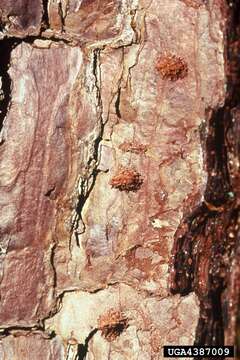Monochamus eggs on Pine sp. (07)

Description:
Description: Monochamus sp. The most common mode of transmission of the nematode Bursaphelenchus xylophilus (Steiner & Buhrer) Nickle) however, is when the adult female sawyer ovipositions in recently felled logs and dead or dying conifers, particularly pines. This is secondary transmission and the nematode is a secondary associate. Slide shows oviposition pits made in bark by sawyer. Source: https://www.forestryimages.org/browse/detail.cfm?imgnum=4387009. Author: L.D. Dwinell, USDA Forest Service, Bugwood.org.
Included On The Following Pages:
- Biota
- Eukaryota
- Opisthokonta
- Metazoa
- Bilateria
- Protostomia
- Ecdysozoa
- Nematoda (roundworms)
- Aphelenchidae
- Bursaphelenchus
- Secernentea
- Aphelenchida
- Unikonta
- Holozoa
- Filozoa
- Epitheliozoa
- Eumetazoa
- Cycloneuralia
- Nematoidea
- Bursaphelenchus xylophilus
This image is not featured in any collections.
Source Information
- license
- cc-by-3.0
- copyright
- L.D. Dwinell, USDA Forest Service, Bugwood.org
- creator
- L.D. Dwinell, USDA Forest Service, Bugwood.org
- source
- https://www.forestryimages.org/browse/detail.cfm?imgnum=4387009
- original
- original media file
- visit source
- partner site
- Wikimedia Commons
- ID


